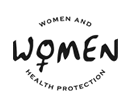FOR IMMEDIATE RELEASE
January 26, 2005
Health and environment advocates cautious about “Campaign to Control Cancer”
Funding sources questioned
There are many good recommendations in the Canadian Campaign to Control Cancer launched last week, say many cancer prevention and health activists. But there are also critical omissions, and the funding of the new campaign by several leading pharmaceutical companies should raise some immediate red flags.
“Yes, more funding and action are needed on cancers linked to
smoking, diets poor in fruits and vegetables, obesity, and over-exposure to sunlight,” says
environmental author and cancer prevention activist, Liz Armstrong of Erin, Ontario.
However, there also needs to be much more focus and action on cancer hazards over which Canadians personally have no control, such as the scores of synthetic carcinogens, hormone disruptors and radionuclides that make their way through the environment, and become an unwanted ‘body burden’ of toxic substances. “Every Canadian carries such a burden, from the moment of conception throughout life. With more and more evidence that childhood and other cancers begin in utero, this ought to be at the top of the cancer prevention agenda at every level of government.”
There also needs to be more focus on reducing or eliminating cancer hazards in our homes, schools and workplaces that are linked to many common products we use or consume as a matter of course, such as:
• lawn, garden and indoor pesticides
• some pharmaceutical drugs
• radiation from unnecessary medical X-rays and CAT scans
• hazardous cleaning solvents, paint strippers, dry cleaning chemicals
• some combustible fuels
• plastics and other products that leach hormone disruptors.
These larger primary prevention issues, which would not only require political
action but but would be a threat to many corporate interests, are given scant
attention in the Campaign.
An additional concern about the new campaign is its main source of funding, which includes several major pharmaceutical companies, a point not evident in the full-page ads that ran in key national papers last week. Anne Rochon Ford of the national working group, Women and Health Protection, says these companies not only profit from cancer treatments, but “they also contribute to the toxic burden we all carry by polluting our air, water and food with agricultural chemicals and other carcinogenic substances.” Ford adds, “Of course we want to see better control of cancer -- who could argue against that? “But there is both a real and perceived conflict of interest present when the funders will profit financially from the success of this campaign.”
Another group concerned with the campaign is the Canadian Association of
Physicians for the Environment (CAPE). Dr. Warren Bell, a family physician based
in Salmon Arm, BC and a spokesperson for CAPE, says, “Drug companies, like
all corporations, never involve themselves in a project unless it will enhance
their bottom line. Since they're interested in sales, not prevention, and since
they or their subsidiaries produce a panoply of toxic chemicals, their role in
this otherwise admirable venture is problematic.”
This group of health and environment advocates applaud any efforts to bring more
attention to the growing incidences of cancer and the need to alleviate the pain
and suffering it causes. But they believe the campaign must go much further:
In order to end the cancer epidemic, the whole picture is needed, and it needs
to be addressed in a very public, transparent and proactive way.
Contacts
Environmental author
Liz Armstrong
519-833-7202
liz@ican.net
Women and Health Protection
Anne Rochon Ford
416-712-9459
annerf@sympatico.ca
Canadian Association of Physicians for the Environment
Dr. Warren Bell
cppbell@web.ca
Environmental Educator
Dorothy Goldin Rosenberg, PhD
416-960-4944
dgoldinrosenberg@oise.utoronto.ca
Copyright ©2006-2010 Women and Health Protection
Supported by the Women's Health Contribution Program,
administered by the Gender and Health Unit of Health Canada.
In partnership with The Canadian Women's Health Network.

